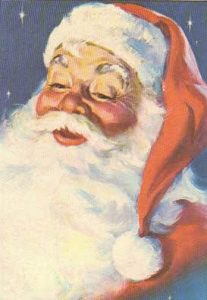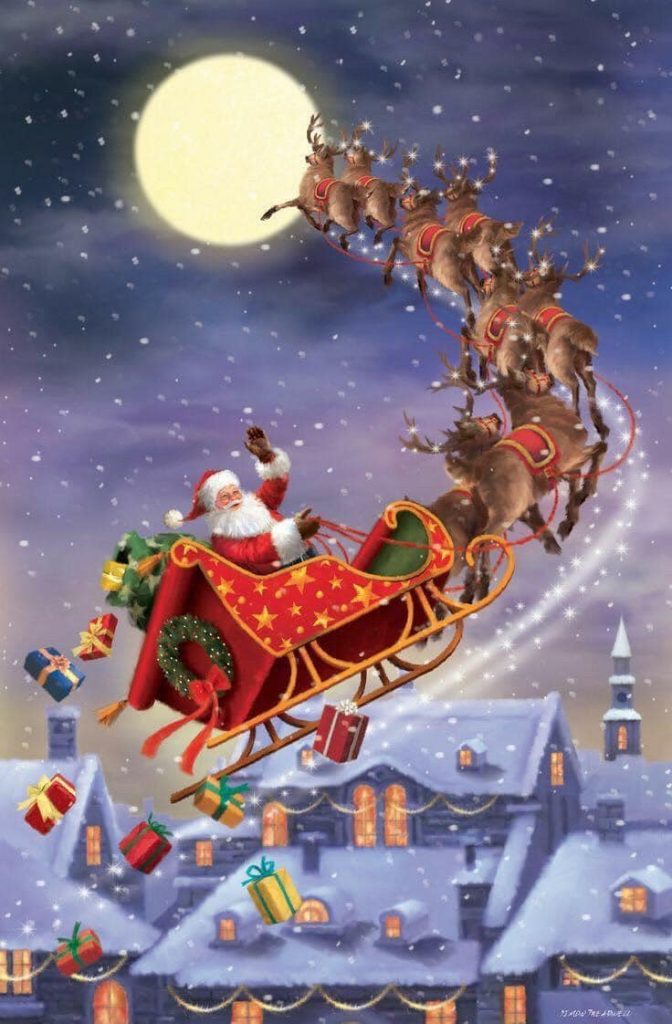The Chronicle of Christmas
I want to wish each and every one of you the best of your Holiday Season and a very Merry Christmas. This is always a time of year when we all treat each other like we should all the time. The spirit of the Holidays warms my heart and I hope it does yours too. Enjoy! The Chronicle of Christmas
Starting in the 1600’s

1600’s: The Puritans made it illegal to mention St. Nicolas’ name. Therefore it was also illegal to exchange gifts, light a candle, or sing Christmas carols.
17th century: Dutch immigrants brought with them the legend of Sinter Klaas.
1773: Santa first appeared in the media as St. A Claus.
Christmas Presents
1804: The New York Historical Society was founded with St. Nicolas as its patron saint. And then members engaged in the Dutch practice of gift-giving at Christmas.
1809: Washington Irving, writing under the pseudonym Diedrich Knickerbocker, included Saint Nicolas in his book “A History of New York.” Nicolas after that is described as riding into town on a horse.
1812: Irving, revised his book to include Nicolas riding over the trees in a wagon.
1821: William Gilley printed a poem about “Santeclaus” who was dressed in fur and drove a sleigh drawn by a single reindeer.
1822: Dentist Clement Clarke Moore is believed by many to have written a poem “An Account of a Visit from Saint Nicolas,” which became better known as “The Night before Christmas”. In other words Santa is portrayed as an elf with a miniature sleigh equipped with eight reindeer. They were named in the poem as Blitzem, Comet, Cupid, Dancer, Dasher, Donder, Prancer, and Vixen. Others attribute the poem to a contemporary, Henry Livingston, Jr.
The start of Santa

1841: J.W. Parkinson, a Philadelphia merchant, hired a man to dress up in a “Criscringle” outfit and climb the chimney of his store.
1863: Above all illustrator Thomas Nast created images of Santa for the Christmas editions of Harper’s Magazine. These continued through the 1890’s.
1860s: President Abraham Lincoln asked Nast to create a drawing of Santa with some Union soldiers. After that this image of Santa supporting the enemy had a demoralizing influence on the Confederate army. Maybe an early example of psychological warfare.
1897: Francis P Church, Editor of the New York Sun, wrote an editorial in response to a letter from an eight year-old girl, Virginia O’Hanlon. She had written the paper asking whether there really was a Santa Claus. Therefore It has become known as the “Yes, Virginia, there is a Santa Claus” letter
After the 1900’s
1920’s: The image of Santa became so well known as a bearded, over-weight, jolly man dressed in a red suit with white trim.
1931: Haddon Sundblom, illustrator for The Coca-Cola ™ company drew a series of Santa images. Until 1964 Coca-Cola used their Santa images in their Christmas advertisements. The company holds the trademark for the Coca-Cola Santa design. Christmas ads including Santa continue to the present day.
1939 Copywriter Robert L. May of the Montgomery Ward Company created a poem titled Rudolph, the ninth reindeer. He created an ostracized reindeer with a shiny red nose. The Chronicle of Christmas. Rudolph became a hero one foggy Christmas eve. Santa was part-way through deliveries when the visibility started to degenerate. Because of the foggy Christmas Eve Santa added Rudolph to his team of reindeer to help illuminate the path.
1949 famous song
1949: Johnny Marks wrote the song “Rudolph the Red-Nosed Reindeer”. Rudolph was rejected by the other reindeer therefore Santa relocated him to the North Pole. They wouldn’t let him play in their reindeer games because of his strange looking nose. Gene Autry recorded his all time best seller. Next to “White Christmas” it is the most popular song of all time.
1993: In addition an urban folk tale began to circulate about a Japanese department store. The Japanese department store supposedly displayed a life-sized Santa Claus crucified on a cross. It never happened.
1997: In conclusion Artist Robert Cenedella drew a painting of a crucified Santa Claus. First showed up in a window of the New York’s Art Students League. The painting received intense criticism from some religious groups. However, his drawing was a protest. He was trying to show how Santa Claus had replaced Jesus Christ as the most important personality at Christmas time.
References:
References: Barbara G. Walker, “The Woman’s Encyclopedia of Myths and Secrets.” Harper & Row, (1983) Pages 725 to 726. “St. Nicholas of Myra,” The Catholic Encyclopedia, at: www.newadvent.org/cathen/11063b.htm “Father Frost,” at: www.bobandbabs.com/ “Yes, Virginia, there is a Santa Claus,” at: www.stormfax.com/virginia.htm “The Claus that Refreshes,” at: www.snopes.com/cokelore/santa.htm “Rudolph,” at: www.snopes.com/holidays/xmas/ “R Cendella Gallery – Theme: Commentary,” at www.rcenedellagallery.com “St. Nicholas of Bari (Fourth Century),” Catholic Information Network, at: www.cin.org/nichbari.html
#santa #christmas #clause #reindeer #merry
